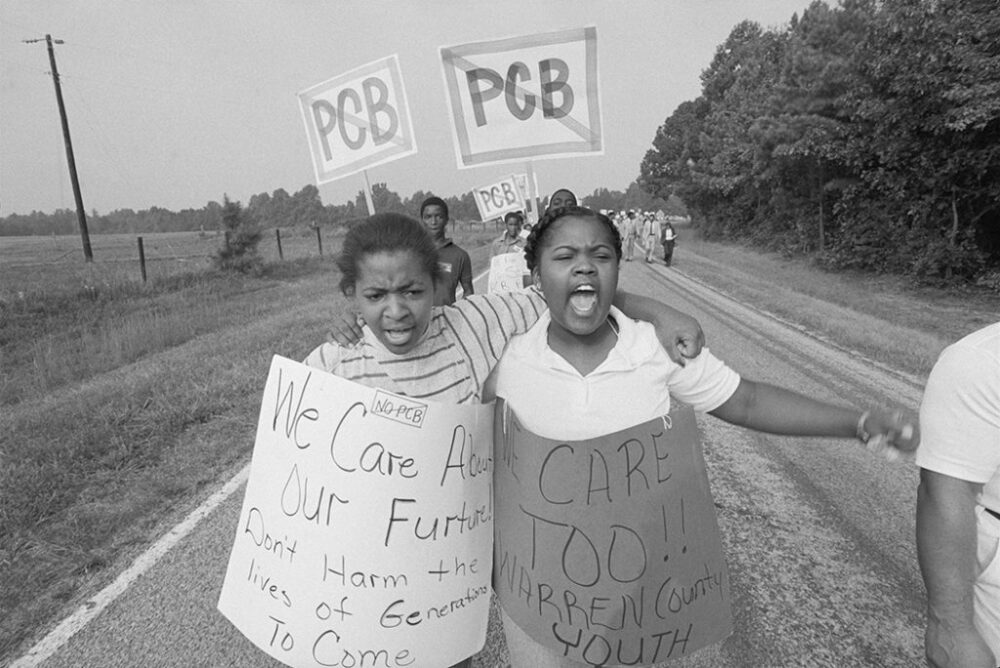We have much more to do and your continued support is needed now more than ever.
5 Climate Week Themes to Know

It’s Climate Week! From our vast lands to our deep oceans, the more we know about our ecosystems, the better we can respond to climate change. It’s hard to believe, but many vital topics intersect with climate change. From how we use energy to decisions we make on policy to our actions for environmental justice, people and wildlife are counting on us. There is only one way we can fundamentally intervene in climate change: together, it’s in our nature.
Nature/Wildlife
From the little mountain chorus frog to the mighty moose, wildlife across the country are struggling to adapt to a changing climate. Warming temperatures are altering bird species’ migration patterns, sometimes dramatically. Early springs, especially if they are followed by freezing temperatures after plants have started growing, are treacherous to birds who return north to find their food resources are scarce. Species adapted for cold climates, like moose, are losing habitat and winter food sources while seeing increases in threats like winter ticks.
More frequent and severe extreme weather of all kinds are threatening the lives and habitats of wildlife. The devastating wildfires in Maui last month put many of the state’s 500 endangered species at risk—including the akikiki, the most endangered bird in the U.S. This summer also saw record high temperatures in the ocean off Florida’s coast. Overly warm temperatures can cause coral bleaching, when corals discard the algae they need to survive. Bleaching can lead to the death of coral reefs, which support an estimated 25 percent of marine life worldwide.
Nature as we know it is at imminent risk from climate change, but it also can and must be part of the solution. Natural climate solutions, like restoring forests, wetlands, and grasslands, could remove and store up to 10 gigatons of carbon dioxide cumulatively by 2050.

Decarbonizing Industry
Did you know that industrial processes, including the manufacturing of everyday products, account for 24 percent of the United States’ total carbon dioxide emissions? Addressing pollution from the industrial sector is critically important in our path to lowering climate-disrupting greenhouse gasses.
Luckily, we have reliable technologies that can be used to drastically reduce the emissions involved in these hard-to-abate industries—like steel and cement production—that are too difficult to be electrified at this point in time.
By using direct air capture, we can take excess carbon dioxide straight out of the air and store it permanently underground, thus reducing historic and unavoidable emissions that have built up and remained in the atmosphere since the Industrial Revolution. Carbon capture and storage uses this same process, but captures carbon at a point source, like on a smoke stack. Additionally, we can reuse that captured carbon and recycle it during manufacturing, reducing the nearly 8 billion tons of CO2 that come from these processes annually. There is also potential for green hydrogen to play a role in replacing fossil fuel inputs as long as it provides good net benefits for the climate, people, and wildlife.

Environmental Justice
Climate change has severe impacts on human health. Prolonged heat waves as a result of climate change are on the rise across the country and kill nearly 700 people in the U.S. each year. Meanwhile, increased extreme weather events harm the safety of entire communities. Climate change is also linked to the spread of pest-related diseases like Lyme disease.
While the effects of climate change are indiscriminate, the impacts that it has caused and will continue to affect marginalized communities disproportionately and amplify existing systemic inequities for communities of color, lower wealth communities, Indigenous peoples, people with disabilities, women, and children. These communities have also been largely unseen, unheard, and under-resourced in climate change and public health decision-making opportunities.
The Climate Equity Collaborative™ is a public-private partnership that seeks to disrupt this pattern by engaging with stakeholders at all levels, enhancing climate career readiness, and promoting data-driven solutions to create more on-ramps and opportunities for at-risk communities to participate in the global climate conversation and decision-making.

Energy
Energy-related activities account for around 81 percent of all U.S. emissions across all sectors, with fossil fuel combustion contributing the most. In addition to combusting fossil fuels for manufacturing purposes, industries also burn fossil fuels to create electricity driving other processes.
In addition to planet-warming greenhouse gasses, fossil fuel power plants emit other dangerous pollutants that threaten wildlife and human health and contribute to early deaths. These include pollutants such as mercury, nitrogen oxides, and particulate matter, which together form smog pollution. Expanding renewable energy through a smart, interconnected electric grid is paramount to decarbonizing our energy sector and putting an end to the adverse impacts that particularly harm communities overburdened by pollution and poor health. The Biden Administration has released many proposals to tighten rules limiting pollution from fossil fuel power plants and improve methods to produce renewable energy and build new transmission lines.

Policy
Policy is crucial to accelerating climate action. Climate-smart policies that center people, wildlife, and ecosystem health help influence state and local government and businesses to make good decisions that support our collective need to address the climate crisis and transition to a low-carbon economy.
The National Wildlife Federation and its 52 state and territorial affiliates are committed to uniting people from all walks of life and giving wildlife a voice in the halls of Congress. For more than eight decades, the Federation has served as a trusted advocate, working to conserve wildlife, watersheds, and landscapes for future generations and to ensure wildlife thrive in a rapidly changing climate.
Of significance today, we and our partners are working to ensure responsible, equitable spending of billions of dollars in new federal climate and clean energy investments stemming from the Inflation Reduction Act of 2022.























